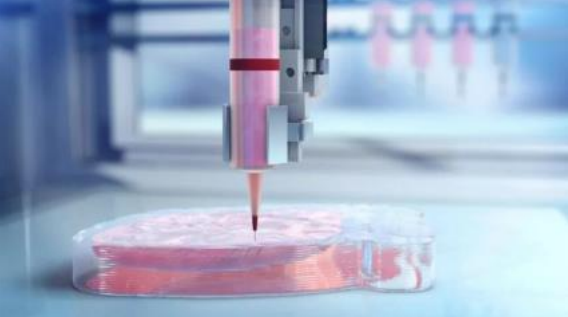
Promises of Bioprinting Technology
As the world becomes more technologically advanced, there are more opportunities being developed by biotech companies to solve health issues that all humans face. One of those problems is availability of donated organs and tissue. According to the United Network For Organ Sharing, the U.S. alone has 120,000 patients on the transplant list. In China, that number soars to 1.5 million. The demand for functional replacement organs is clear.
Bioprinting is one proposed solution to meet the demand of organs and tissue without relying on donations. In the early 2000s, bioengineer James Thompson invented the first bioprinter, founded on cell theory and 3D printing. Since then many advancements have been made, and the results are promising. Bioprinters function in two unique ways. The more common process is to bioprint using hydrogel, a naturally derived polymer that is implanted with cell culture post-printing. The second, more intricate method, is to use bio-ink, so that the structure is already composed of cellular matter. These inks are then extruded from the print head using condensed air pressure, and printed layer by layer.
Many biotech companies have already had successes in bioprinting. While full organ development has never been achieved, Organovo Inc. has created slivers of liver tissue that reacted to medication just as an authentic organ would. Allevi Inc. has also developed 3D bioprinting technology, which begins with a 3D file, digitally sliced, which is then sent to a bioprinter for processing.
Despite the potential of this technology there are still complications with creating useful organs. So far only certain tissues have been successfully printed. Skin and cartilage are relatively easy to print, but complications remain in producing functional, three-dimensional organs. Some of these complications include maintaining organ structure and creating a functional circulatory network for printed organs.
The economic impact of bioprinting technology is still uncertain. Bioprinters are highly specialized and expensive; current printer costs can be as high as $ 300,000 USD. Work is already underway to build a simpler and less expensive bioprinter, however, with one research team at the University of California having already developed a bioprinter for just under $ 375 USD. While current usage is limited, the health and economical benefits of widely available bioprinted organs and tissues would allow for an overall healthier society and workforce.
Bioprinting technology also introduces some ethical questions. The benefits of bioprinted organs are obvious: printed organs and tissues could eliminate demand for human organ donations, while also offering the opportunity for personalized medical and pharmaceutical testing. Disease modelling could also be conducted on bioprinted human tissue as opposed to animals or human test subjects. Bioprinted organs have the added potential to reduce the relevance of or completely eliminate the organ black market. The high costs associated with bioprinting, however, could limit access to only the wealthiest patients until technology is improved and costs are reduced. In her article, ‘Bioprint Me: a socioethical view of bioprinting human organs and tissues’ Niki Vermeulen, a specialist in innovation policy at the University of Edinburgh, argues that bioprinting could lead to social stratification. Regulations will need to be developed that can reconcile the lifesaving technology of bioprinting with profit-motivated biotech companies.
Bioprinting is an exciting new technology that has the potential to revolutionize medical treatments and research by reducing our reliance on organ donations and animal testing. While there are still technological and ethical problems to solve, further development will continue to decrease costs while contributing to a healthier workforce. Bioprinting promises to be a new life-saving technology that also has significant potential in improving medical research.
Roman Bharati